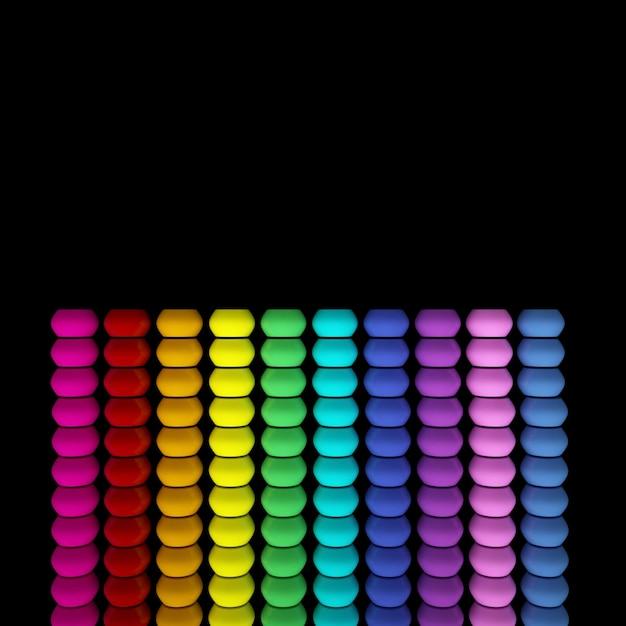In the world of science and engineering, precision and accuracy are two important factors to consider when it comes to measurements and data analysis. Repeatability, a term often used in this context, refers to the ability to get consistent results when carrying out the same experiment or measurement multiple times. But how exactly is repeatability calculated? And why is it important?
In this blog post, we will delve into the world of repeatability and explore its calculation methods. We will also address common questions such as whether high accuracy can coexist with low precision, the difference between uncertainty and standard deviation, and the similarities and differences between reproducibility and precision. So, if you’re intrigued by the mysteries of repeatability and want to enhance your understanding of this fundamental concept in scientific research, keep reading!

How Repeatability is Calculated
Repeatability is a crucial factor when it comes to measuring accuracy and reliability in various fields. Whether you’re conducting experiments in a lab, testing software, or even trying to perfect your secret recipe for the ultimate chocolate chip cookie, being able to calculate repeatability is essential. So, buckle up and get ready to dive into the fascinating world of repeatability calculation!
Understanding the Basics
Before we embark on this journey through the intricacies of repeatability calculation, let’s make sure we’re all on the same page. Repeatability, in simple terms, refers to the ability to achieve consistent results when performing the same experiment or process multiple times. It’s like trying to throw a dart and hitting the bullseye every single time, or at least aiming for it!
Getting Down to the Math
Now, let’s crunch some numbers and see how repeatability is actually calculated. The most common method for measuring repeatability is by using the standard deviation. You might remember this statistical term from a dreaded math class, but fear not, we’ll make it as painless as possible!
Start by collecting a set of data points from repeated trials. For example, if you’re measuring the weight of your cookies, you might weigh ten batches. Calculate the mean of these values by adding them up and dividing by the total number of trials. Next, subtract the mean from each data point and square the result. Sum up all these squared differences and divide by the number of trials minus one. Finally, take the square root of this value, and voilà! You’ve got yourself the standard deviation, which gives you an idea of the scatter or variability in your data.
Making Sense of Repeatability
Now that we have our trusty standard deviation in hand, we can use it to determine the repeatability of our measurements. Generally, repeatability is expressed as a range around the mean value. This range, known as the confidence interval, tells us how much our data is likely to fluctuate when we repeat the experiment or process.
To calculate the confidence interval, we typically use a t-distribution. The t-distribution takes into account the sample size and the variability of our data. By multiplying the standard deviation by a specific factor derived from the t-distribution, we can determine the upper and lower limits of our confidence interval. These limits represent the range within which our measurements are likely to fall.
Embracing the Magic Number
Remember, in the world of statistics, there’s always a touch of magic. In this case, the magic number is the confidence level. The confidence level represents the level of certainty we want to achieve in our results. Commonly used confidence levels include 95% or 99%, where a higher percentage indicates a greater level of confidence. So, if we choose a 95% confidence level, we’re pretty darn sure our measurements will fall within the calculated range about 95% of the time.
Putting It All Together
Congratulations! You’re now equipped with the knowledge to calculate repeatability like a pro. By measuring the standard deviation, calculating the confidence interval, and taking the confidence level into consideration, we can determine just how repeatable our data is. So, the next time you’re embarking on a scientific adventure or simply trying to create the perfect batch of cookies, keep the magic of repeatability in mind and embrace the joy of consistent results!
Key Takeaways:
- Repeatability refers to achieving consistent results in repeated trials.
- The standard deviation is used to measure repeatability.
- The confidence interval provides a range of likely values for our measurements.
- The t-distribution helps calculate the confidence interval.
- The confidence level determines the level of certainty in our results.

FAQ: How is repeatability calculated
In the world of measurements and experiments, repeatability is a crucial aspect that determines the reliability and precision of results. Whether you’re a scientist, engineer, or just a curious individual, understanding how repeatability is calculated can demystify the process and help you interpret data more accurately. In this FAQ-style subsection, we’ll unravel the secrets of repeatability calculation and answer some commonly asked questions along the way.
Is it possible to have high accuracy and low precision
Accuracy and precision are like the dynamic duo of measurement. Accuracy tells you how close your value is to the true or expected value, while precision indicates the consistency and reproducibility of your measurements. So, can you have high accuracy and low precision? In theory, yes! Imagine hitting the bullseye of a target every time but never hitting the same spot twice – that’s high accuracy and low precision for you!
What is reproducibility instrumentation
When it comes to repeatability, instrumentation plays a significant role. Reproducibility instrumentation refers to the tools and devices used to carry out measurements or experiments. These instruments can include anything from sophisticated scientific equipment to your trusty old measuring tape. The quality and capabilities of your instrumentation can greatly impact the repeatability of your results.
Why is repeatability uncommon with projects
Ah, the mystery of repeatability in projects! It’s no secret that projects often come with their fair share of uncertainties and variables. From unexpected weather conditions to the occasional faulty equipment, there are numerous factors that can make repeatability a rare gem in the world of projects. But fear not, my friend, for with proper planning, meticulous documentation, and a sprinkle of luck, repeatability can still be achieved!
How do you calculate the repeatability limit
Calculating the repeatability limit involves a nifty little formula. You take the standard deviation of multiple measurements obtained under identical conditions and multiply it by 2.77. This magic number, 2.77, corresponds to approximately 95% confidence, giving us a range within which we can expect our future measurements to fall. So, calculate that standard deviation, grab your calculator, and let the repeatability party begin!
Is uncertainty the same as standard deviation
While uncertainty and standard deviation are related, they are not exactly the same thing. Think of it this way: standard deviation is like your cool statistics pal, measuring the scatter or variability of data points. On the other hand, uncertainty is more of a broader concept that encompasses various factors, including measurement errors, instrument calibration, and the limitations of the measurement process itself. So, they’re like cousins – similar but not identical!
Is reproducibility the same as precision
Although reproducibility and precision might seem like close relatives, they do have their differences. Precision, as we discussed earlier, is all about consistency and how close your measurements are to each other. Reproducibility, on the other hand, takes it up a notch. It focuses on the consistency of results when different people, labs, or instruments carry out the same experiment or measurement. In simpler terms, reproducibility examines whether others can obtain similar results to yours, adding a whole new layer of trustworthiness to your findings.
What is the repeatability limit
Ah, the elusive repeatability limit! Simply put, the repeatability limit is the ultimate party crasher for your measurements. It sets a boundary that defines the maximum allowable difference between measurements taken under identical conditions. If your measurements exceed this limit, it’s time to go back to the drawing board and investigate what went wrong. So, remember folks, keep your measurements within the repeatability limit, and you’re golden!
Calculating repeatability doesn’t have to be as daunting as solving a Rubik’s Cube blindfolded. Armed with the knowledge of how repeatability is calculated, you can navigate the world of measurements with confidence and flair. So, embrace the magic of standard deviations, befriend reproducibility instrumentation, and aim for that repeatability bullseye. Happy measuring, my friend!
Disclaimer: No Rubik’s Cubes were harmed in the making of this FAQ.
